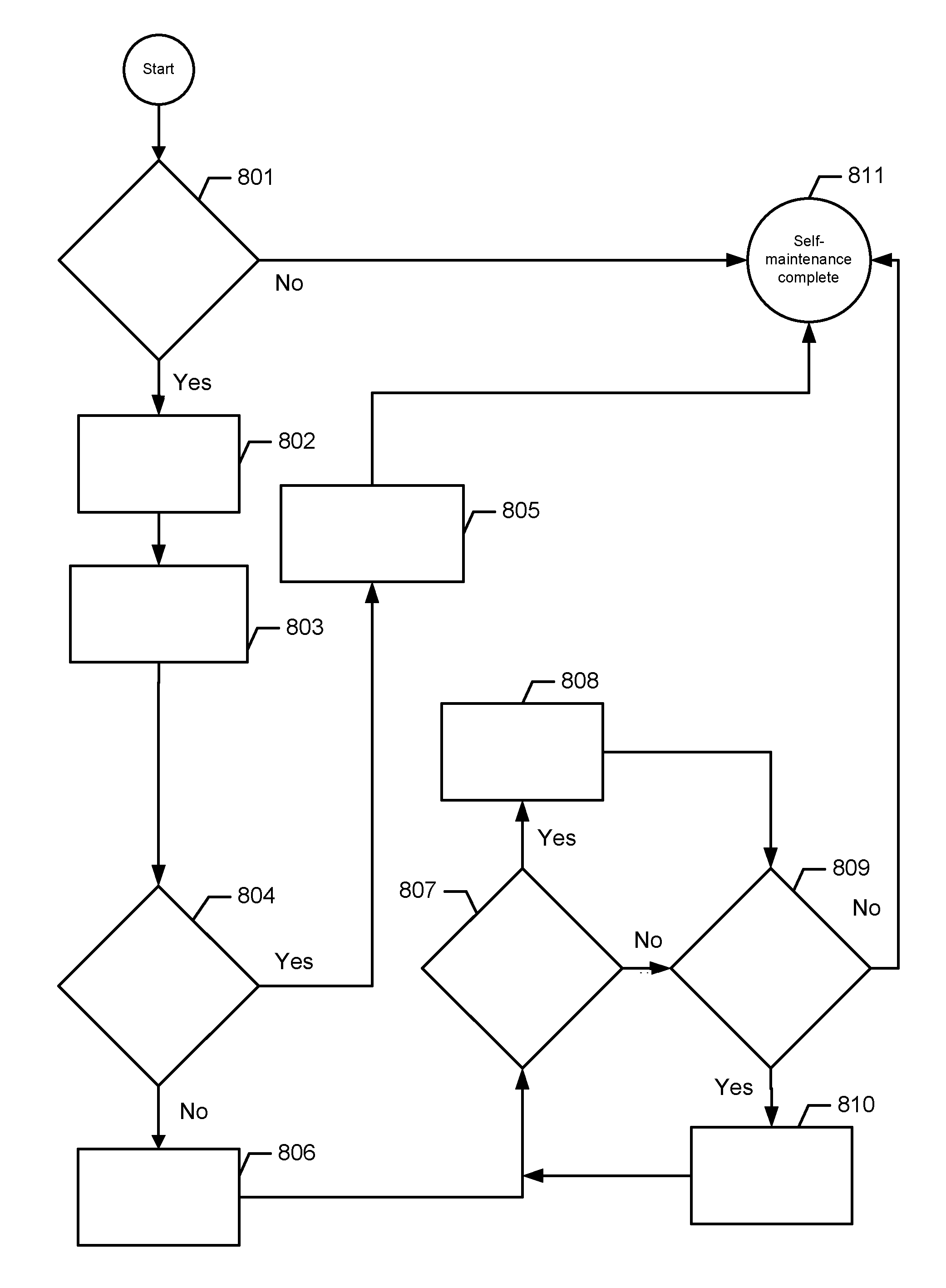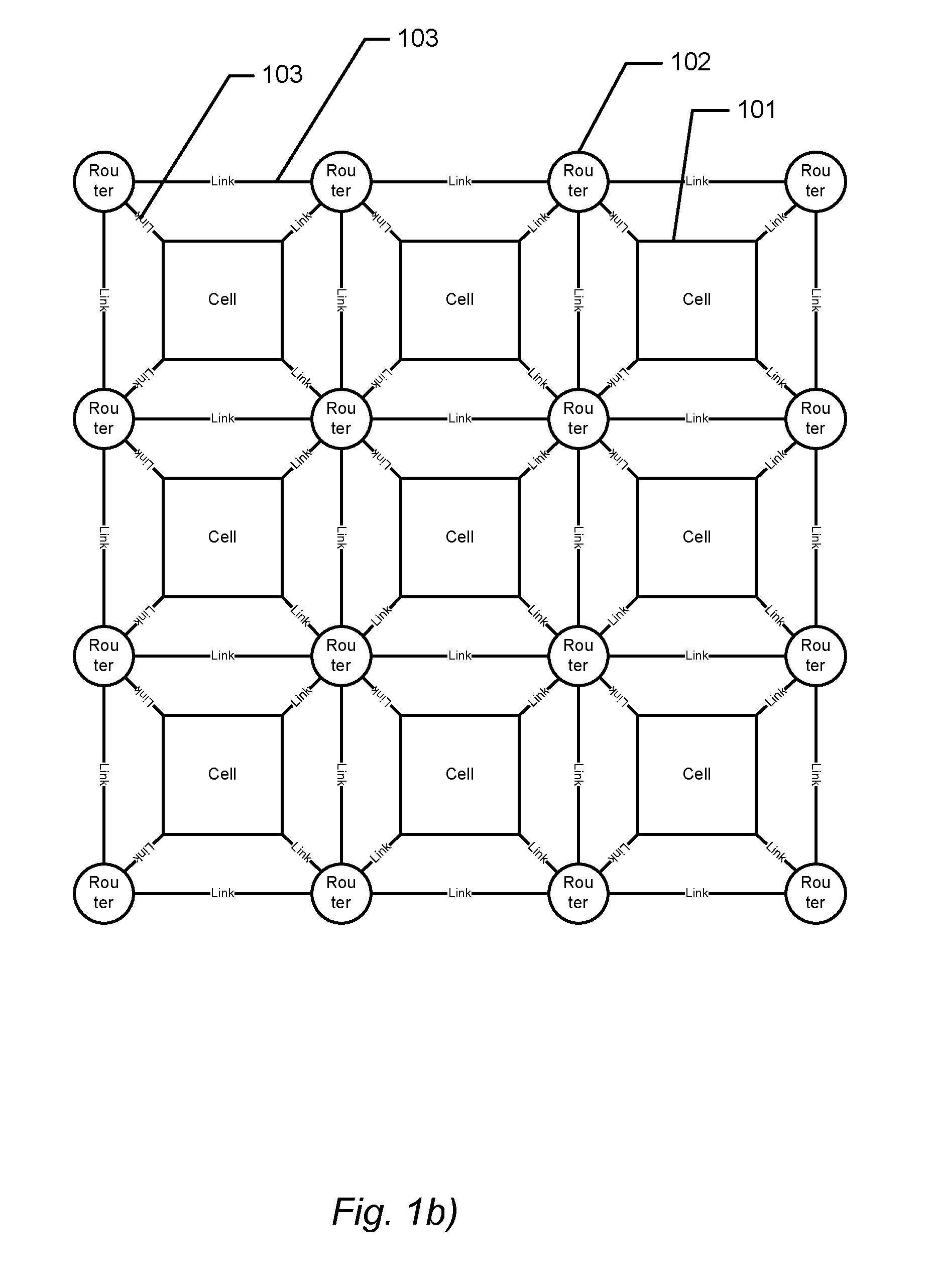Biologically inspired hardware cell architecture
a hardware cell and architecture technology, applied in the field of biologically inspired hardware cell architecture, can solve the problems of increasing the difficulty of fabricating semiconductor devices, introducing device flaws, and difficult to guarantee that a given device will work in a certain way, and achieve the effect of eliminating the risk of dead register cells and ensuring system stability
- Summary
- Abstract
- Description
- Claims
- Application Information
AI Technical Summary
Benefits of technology
Problems solved by technology
Method used
Image
Examples
Embodiment Construction
[0103]In the following description, reference is made to the accompanying figures, which show by way of illustration how the invention may be practiced.
[0104]FIG. 1 shows an example of a platform according to the present system.
[0105]FIG. 1a) shows the platform as a Network-on-Chip (NoC) 104 on which a number of cells 101 are arranged.
[0106]FIG. 1b) shows the platform comprising the number of cells 101, a number of routers 102 and a number of links 103 connecting the cells 101 and the routers 102. The cells are processing units, each of which is able to perform a number of mathematical operations and translate the DNA programming language into the hardware blocks shown in FIG. 4. The cells may also be denoted as computation units, heterogeneous computation units and or the like. The cells 101 may be reconfigurable. Each cell 101 is adapted to communicate with a number of other cells 101 on the platform. This may be accomplished by using the routers 102. Each cell 101 is connected to...
PUM
 Login to View More
Login to View More Abstract
Description
Claims
Application Information
 Login to View More
Login to View More - R&D
- Intellectual Property
- Life Sciences
- Materials
- Tech Scout
- Unparalleled Data Quality
- Higher Quality Content
- 60% Fewer Hallucinations
Browse by: Latest US Patents, China's latest patents, Technical Efficacy Thesaurus, Application Domain, Technology Topic, Popular Technical Reports.
© 2025 PatSnap. All rights reserved.Legal|Privacy policy|Modern Slavery Act Transparency Statement|Sitemap|About US| Contact US: help@patsnap.com



